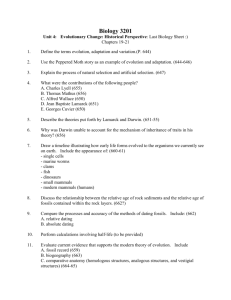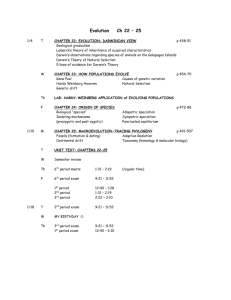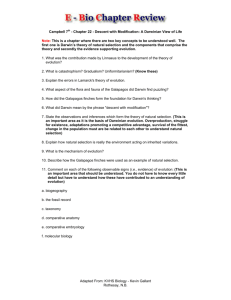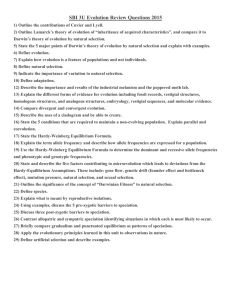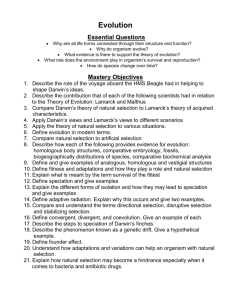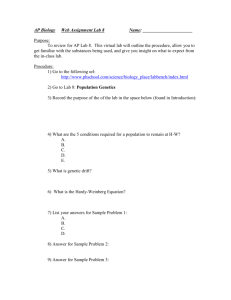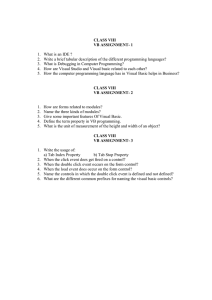Ch. 22, 23, 24 reading and study guide questions
advertisement
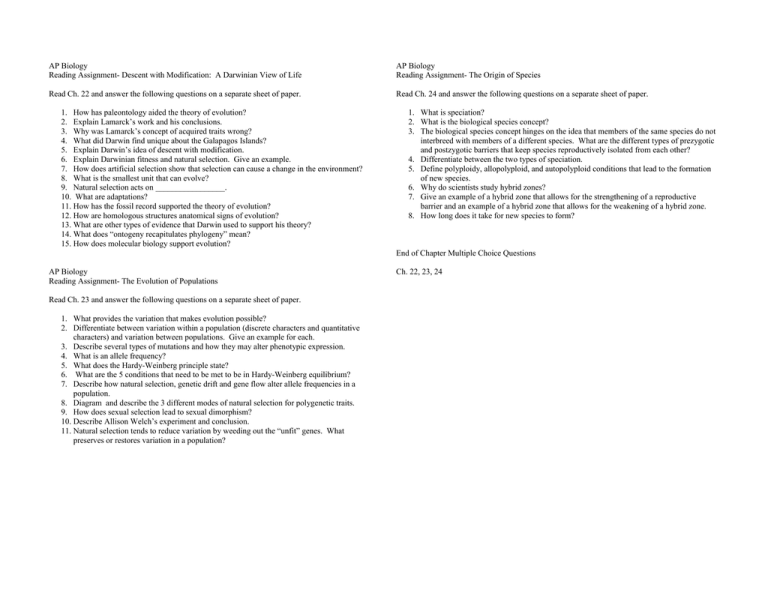
AP Biology Reading Assignment- Descent with Modification: A Darwinian View of Life AP Biology Reading Assignment- The Origin of Species Read Ch. 22 and answer the following questions on a separate sheet of paper. Read Ch. 24 and answer the following questions on a separate sheet of paper. 1. How has paleontology aided the theory of evolution? 2. Explain Lamarck’s work and his conclusions. 3. Why was Lamarck’s concept of acquired traits wrong? 4. What did Darwin find unique about the Galapagos Islands? 5. Explain Darwin’s idea of descent with modification. 6. Explain Darwinian fitness and natural selection. Give an example. 7. How does artificial selection show that selection can cause a change in the environment? 8. What is the smallest unit that can evolve? 9. Natural selection acts on _________________. 10. What are adaptations? 11. How has the fossil record supported the theory of evolution? 12. How are homologous structures anatomical signs of evolution? 13. What are other types of evidence that Darwin used to support his theory? 14. What does “ontogeny recapitulates phylogeny” mean? 15. How does molecular biology support evolution? 1. What is speciation? 2. What is the biological species concept? 3. The biological species concept hinges on the idea that members of the same species do not interbreed with members of a different species. What are the different types of prezygotic and postzygotic barriers that keep species reproductively isolated from each other? 4. Differentiate between the two types of speciation. 5. Define polyploidy, allopolyploid, and autopolyploid conditions that lead to the formation of new species. 6. Why do scientists study hybrid zones? 7. Give an example of a hybrid zone that allows for the strengthening of a reproductive barrier and an example of a hybrid zone that allows for the weakening of a hybrid zone. 8. How long does it take for new species to form? End of Chapter Multiple Choice Questions AP Biology Reading Assignment- The Evolution of Populations Read Ch. 23 and answer the following questions on a separate sheet of paper. 1. What provides the variation that makes evolution possible? 2. Differentiate between variation within a population (discrete characters and quantitative characters) and variation between populations. Give an example for each. 3. Describe several types of mutations and how they may alter phenotypic expression. 4. What is an allele frequency? 5. What does the Hardy-Weinberg principle state? 6. What are the 5 conditions that need to be met to be in Hardy-Weinberg equilibrium? 7. Describe how natural selection, genetic drift and gene flow alter allele frequencies in a population. 8. Diagram and describe the 3 different modes of natural selection for polygenetic traits. 9. How does sexual selection lead to sexual dimorphism? 10. Describe Allison Welch’s experiment and conclusion. 11. Natural selection tends to reduce variation by weeding out the “unfit” genes. What preserves or restores variation in a population? Ch. 22, 23, 24

